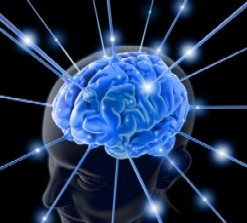“The Laws of (Real) Magic” by Isaac Bonewits
1. Law of Knowledge: Understanding brings control; the more you know about a subject, the easier it is to control it. “Knowledge is power.”
2. Law of Self-Knowledge: The most important magical knowledge is about oneself; familiarity with one’s own strengths and weaknesses is vital to a magician. “Know thyself.”
3. Law of Cause and Effect: If exactly the same actions are done under exactly the same conditions, they will produce exactly the same results; similar strings of events produce similar outcomes. “Control every variable and you control every change – lotsa luck!”
4. Law of Synchronicity: Two or more events happening at the same time are likely to have more associations in common than the merely temporal; events rarely happen in isolation from nearby events. “There’s no such thing as a mere coincidence.”
5. Law of Association: If any two or more patterns have elements in common, the patterns interact through those common elements, and control of one pattern facilitates control over the other(s); the greater the commonality, the greater the influence. “Commonality controls.”
6. Law of Sympathy: Things that have an affinity with each other influence and interact with each other over a distance. “Everything is connected to everything else.”
7. Law of Similarity: Like produces like and an effect resembles its cause; having an accurate image of something facilitates control over it. “Look-alikes are alike.”
8. Law of Contagion: Objects or beings once in contact with each other continue to interact after separation. “Magick is contagious.”
9. Law of Positive Attraction: Like attracts like; to create a particular reality you must put out energy of a similar sort. “That which is sent, returns.”
10. Law of Negative Attraction: Like attracts unlike; energy and actions often attract their complimentary “opposites.” “Opposites attract.”
11. Law of Names: Knowing the name, you know that which is named; knowing the complete and true name of an object, being, or process gives one complete control over it. “What’s in a name? -Everything!”
12. Law of Words of Power: Certain words are able to alter the internal and external realities of those uttering them, and their power may rest in the very sounds as much as in their meanings. “A word to the wise is sufficient.”
13. Law of Personification: Any phenomenon may be considered to be alive and to have a personality, that is, to “be” an entity or being, and may be effectively dealt with thusly. “Anything can be a person.”
14. Law of Invocation: It is possible to establish internal communication with entities from either inside or outside of oneself, said entities seeming to be inside of oneself during the communication process. “Beings within…”
15. Law of Evocation: It is possible to establish external communication with entities from either inside or outside of oneself, said entities seeming to be outside of oneself during the communication process. “Beings without…”
16. Law of Identification: It is possible through maximum association between the elements of oneself and those of another being to actually become that being to the point of sharing its knowledge and wielding its power. “You can become another.”
17. Law of Infinite Data: The number of phenomena to be known is infinite; we will never run out of things to learn! “There’s always something new.”
18. Law of Finite Senses: Every sense mechanism of every entity is limited by both range and type of data perceived. “Just because you can’t see it doesn’t mean its not there.”
19. Law of Personal Universes: Everyone lives in and quite possibly creates a unique universe that can never be 100% identical to that lived in by another; so-called “reality” is in fact of matter of consensus opinions. “You live in your cosmos and I’ll live in mine.”
20. Law of Infinite Universes: The total number of universes into which all possible combinations of existing phenomena could be organized is infinite.”All things are possible, though some are more probable than others.”
21. Law of Pragmatism: If a pattern or belief or behavior enables you to survive and to accomplish certain goals, then that belief or behavior is “true” or “real” or “sensible” on whatever levels of reality are involved. “If it works, its true.”
22. Law of True Falsehoods: A concept or act may seem nonsensical and yet still be “true,” provided that it “works” in a specific context. “If it’s a paradox it’s probably true.”
23. Law of Polarity: Any pattern of data can be split into at least two patterns with “opposing” characteristics, and each will contain the essence of the other within itself. “Everything contains its opposite.”
24. Law of Synthesis: The synthesis of two or more “opposing” patterns of data will produce a new pattern that will be “truer” than either of the first ones were; that is, it will be applicable to more realities. “Synthesis reconciles.”
25. Law of Dynamic Balance: To survive and become powerful, one must keep every aspect of one’s universe(s) in a state of dynamic balance with every other one; extremism is dangerous on all levels of reality. “Dance to the music.”
26. Law of Perversity: Also known as “Murphy’s Law:” If anything can go wrong, it will – and in the most annoying manner possible. “If anything can go wrong, it will.”
27. Law of Unity: Every phenomenon in existence is linked directly or indirectly to every other one, past, present, or future; perceived separations between phenomena are based on incomplete sensing and/or thinking. “All is One.”
28. Law of Unintended Consequences: Whether or not what you do has the effect you want, it will have at least three you never expected, and one of those usually unpleasant. “There’s always something else.”

